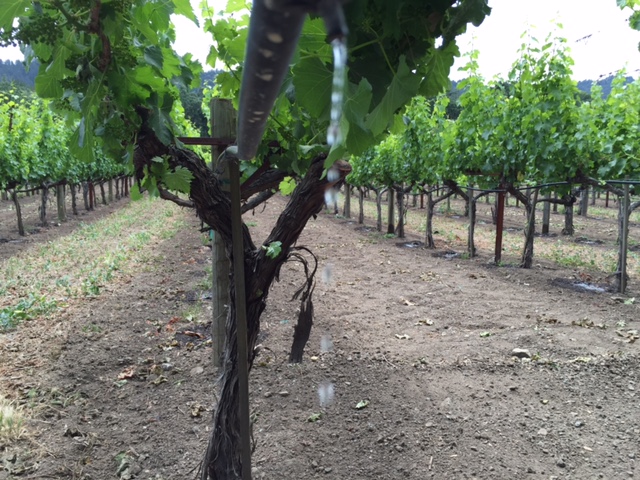We are glad you asked! While some of our favorite guests are dealing with the aftermath of torrential record-breaking rains in Texas and Oklahoma here at home we continue to struggle with drought. Changes to global temperature are expected to affect wine regions by creating microclimates that are production-friendly in areas where grape-growing was never before possible. This also means that for us in Napa the challenge to irrigate our beautiful vines continues to increase as we hope for timely rain to arrive to our beautiful and agriculturally gifted valley. Let me share a few bullets highlighting how the drought is likely to affect wine quality and wine quantity and what our wineries are doing to help their vines produce sufficient yield to create the wines that make Napa so very special.
Yield
There is a direct correlation between the amount of water a vine receives and the yield. To put it simply 80% less water equals 80% less fruit.
Productivity
Small producers of low priced wines are likely to suffer the most, wine producers generating bottles that cost $7 or below will significantly retract production due to high cost of irrigation. Larger wine producers seldom bottle estate wine and instead resort to grapes purchased from large growers who have implemented sophisticated irrigation programs that help minimize the negative effects of the drought
Water Allocation Reductions
The number is almost surreal. Many wine producers are left with 20% of their normal irrigation allocation. To be clear, grapes are quite drought tolerant and older vines will go down deeply into the ground looking for water but without rain to flush the soil the salinity level will increase eventually killing the vines.
Warmer Weather Means Sweeter Wines
Warm and dry conditions result in early ripening of the grapes which in turn sweetens the fruit. A sweeter grape provides the wine maker with unique opportunities to create interesting and flavorful wines that may yield very high prices in the market.
Irrigation Technology Comes to The Rescue
Many wineries have implemented sensors connected to computers that track the dryness of the soil and the plant and trigger drip-style irrigation facilitating maximum utilization of the resources available. Improved efficiencies in water usage promise to buy time and possibly allow some wine producers to survive until the rain returns.
Revised Expectations
For grape producers, particularly in a visitor-heavy area like Napa is tempting to want to create vineyards that are extremely appealing to the eye. Learning that a vine does not necessarily need to be a display of green and lushness is a must for all wine producers. Revised expectations will result in increased savings and additional water resources to be able to irrigate more vines.
Wine demand remains in the rise and everyone here in Napa is working diligently to deliver the best wines possible by combining their expertise, with their passion and embracing new technologies. If you are curious to visit wineries whose conservation efforts are state-of-the art give our Concierge Cynthia a call. She will help you schedule a wine tour that introduces you to some of the most impressive water conservation initiatives in Napa.

Leave a Reply